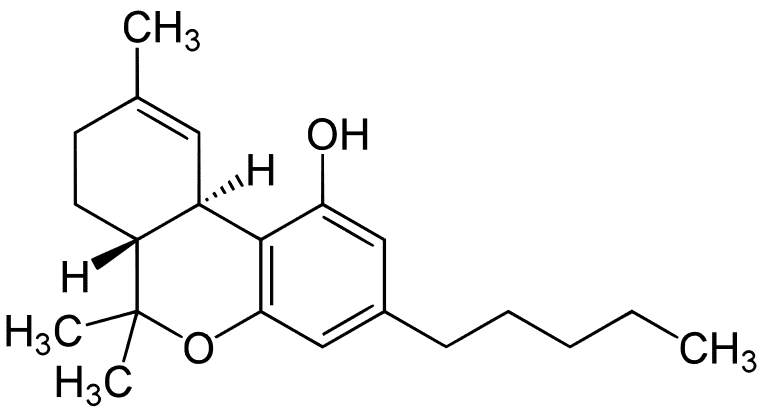A quick and easy guide to hemp derivatives for health and wellness.
When you first hop on the cannabis or CBD train you’ll notice something – there’s a lot of confusing terminology. Terms like endocannabinoid, or entourage effect, Cannabis sativa vs hemp vs marijuana…what does all of this mean?
You just want to feel better. This is so complicated!
Today, we’ll cut to the simple facts. We’ll explain a few things that are very commonly confused: hemp extract and CBD, for example. By the end of this article, you’ll have a very clear understanding of some of what seems like a big and complicated equation.
(It’s not as complicated as you might think. Follow our blog for simple-yet-informative articles on cannabis, CBD, hemp, and CBD life hacks to improve your quality of life.)
Key Points for Today
- What is CBD? Where does it come from?
- What is hemp extract and is that the same thing as CBD?
- And while we’re at it – we’ll explain what the Cannabis sativa plant is and why hemp is not the same as marijuana. But they’re the same plant…kinda? Don’t worry, we’ve got you.
Let’s start with Cannabis sativa, because that’s where it all comes from…
The Plants That Give Us Cannabinoids
One species of plant is the provider of a wide variety of components and uses. Cannabis sativa, once a wild plant in tropical Asiatic regions, is now largely cultivated for a wide variety of uses:
- To make marijuana and other psychoactive compounds (which are federally illegal and heavily regulated at the state level)
- To extract CBD and other cannabinoids for medicinal or homeopathic use, or health and wellness applications
- To make a wide variety of textiles, rope, cloth, and now even concrete for building purposes
- To make hemp seed oil which is used in cooking, for fuel, or to make paint
- To make teas
- To make beauty products
- And so, so much more
Cannabis sativa
The confusion around Cannabis sativa comes from the way it is cultivated.
Think of it like this. There are apple trees. Many apple trees make red apples of a certain variety…but some apple trees make green or yellow apples. They are all still apple trees, but different varieties which suit different purposes. Some make sweet snacks but others produce fruits which are better for baking. This analogy is how we can understand the different types and uses for Cannabis sativa.
Marijuana
Marijuana plants are one variety of Cannabis sativa that are particularly high in THC content. Tetrahydrocannabinol (THC) is a compound in Cannabis sativa that has psychoactive effects on the human body, meaning that it gets you high. Sometimes called “cannabis” or “marijuana” the products made from this very potent THC are called as such because the content of THC is high in the final product.
While marijuana has some medical applications, it still remains illegal to use, federally, and in many states. Marijuana is classified by the CDC as a controlled substance.
While cannabis enthusiasts have long used marijuana for recreational purposes, anecdotal evidence supports health and wellness uses, as well. But how to take advantage of the benefits but avoid getting high? This is where industrialized hemp comes into the conversation.
Some plants that were naturally lower in THC were cultivated and selected for these lower amounts of THC (rinse, repeat) until we had varieties with lower THC content to be grown for other uses, thus, industrialized hemp was cultivated.
So, it’s all the same type of plant, taxonomically speaking, only the varieties with lots of THC in them are called marijuana and the ones with lower THC content are called hemp. In fact, the plants themselves have visible differences as well. Marijuana plants are shorter and bushier with broader leaves while hemp plants grow a little taller with most of the leaves at the top of the plant.
Industrialized Hemp
While some CBD products are made from marijuana plants, most of it comes from this lower-THC version of Cannabis sativa: industrialized hemp. In fact, many growers and manufacturers, as well as lawmakers, have worked very hard to make industrialized hemp separate from marijuana within the law so that it is easier to make products that are derived from similar plant matter but not the same as recreational marijuana or medicinal marijuana.
Rope made from hemp, for example, cannot be considered the same way marijuana is, as a controlled substance. The Farm Bill of 2018 deregulates CBD, THC, and other components of industrialized hemp as controlled substances, allowing CBD product companies to mass produce health, wellness, and personal care products well within the law as long as the THC content per dry weight is less than .3%.
Related Reading: Where Does the Hemp Come From?
What Is CBD?
There are many components in hemp. Terpenes, which give it flavor, and over 113 identified cannabinoids, one of which is cannabidiol or CBD. CBD is used for a wide variety of health and wellness applications and is even being studied for a number of medical uses. We have only begun to discover the effects of CBD on brain chemistry, psychiatric disorders, and neurological pathways.
CBD is a phytocannabinoid (cannabinoid derived from plants) which mimics our body’s own endocannabinoids. Because our bodies are equipped with an endocannabinoid system, phytocannabinoids are also processed by this same system to help our bodily systems to operate more efficiently.
Today, most people use CBD formulas to find more calm in their lives, better sleep, and users also report a variety of other positive benefits.
To be clear: CBD is one kind of compound that comes from Cannabis sativa and is used to make a product which you can consume. Because the molecules are really tiny, they are added to a carrier oil.
CBD Options
- To avoid THC altogether, you’ll have to buy a CBD isolate, which is difficult to make and usually costs a lot more than other CBD formulas.
- Broad Spectrum CBD oil formulas contain trace amounts of THC which may slip in during the extraction process, but these are usually not even enough to be measured. Broad Spectrum CBD formulas offer all the CBD benefits but may be less calming than the formulas which contain some of the THC. Broad Spectrum is also a good choice for those who may be sensitive to THC.
- Full Spectrum CBD oil formulas contain less than .3% THC and for some people that may be a more well-rounded CBD option. Full Spectrum is also a better option for the entourage effect or enhanced benefits due to more parts of the plant being used in one formula.
- You can get marijuana-derived CBD formulas but they usually go over the federally legal amounts of THC.
Related Reading: CBD Buying Tips: 6 Things To Look For When Shopping For CBD Oil
What Is Hemp Extract?
CBD is a hemp extract because we extract it from hemp. But not all hemp extract is purely CBD. In fact, most hemp extracts contain a lot of CBD, plus other things from the hemp plants.
Hemp extract is a broad term that refers to the extract from hemp that is used in a CBD formulation and can contain a wide plant profile. Different companies use different extraction processes and target different cannabinoids so their hemp extracts can differ from company to company, formula to formula.
So, the CBD doesn’t change as a molecule – understand that – but from company to company the hemp extract may be of various quality based on how the company handles extraction and formulation.
And let’s be clear here…what’s in your hemp extract is super important. You want high quality hemp, high quality extraction processes, and high quality resulting hemp extracts. From the growers, soil, and care of the plants all the way to the bottle of CBD oil you purchase – quality and procedure are important. – Asé Pure Naturals
Hemp extract can contain a variety of cannabinoids and terpenes. Higher quality hemp extract is critical to getting the most out of your CBD oil formulas. Flavoring is also added to CBD oil formulations and the quality of flavoring chosen can also highly affect the user’s experience.
Other Notable Cannabinoids in Cannabis sativa
- Delta-9-Tetrahydrocannabinol (THC)
- Delta-8-Tetrahydrocannabinol (D8THC)
- Cannabidiol (CBD)
- Cannabigerol (CBG)
- Cannabinol (CBN)
- Cannabichromene (CBC)
Each of the various cannabinoids has a slightly different plant profile and chemical compound. Using a combination of the various parts of the hemp plant – flowers, seeds, leaves, stems – as well as a combination of different plant terpenes and cannabinoids, we can create a blended extract that has a greater effect. The theory is that the more parts of the plant that are used and the more cannabinoids that are used, the more they work synergistically to amplify the effects, while some cannabinoids actually temper the psychoactive effects of THC. This is known as the entourage effect.
Related reading: What Is the Entourage Effect in CBD?
Top Points to Remember
- CBD is a molecule of particular importance for health and wellness (even beauty) applications.
- CBD can be extracted from marijuana but the preferred method is to extract it from hemp which is federally legal and falls within the .3% THC guidelines.
- Hemp extract contains CBD and other cannabinoids and terpenes from the hemp plant, which all work synergistically to provide exceptional CBD benefits.
- Broad Spectrum CBD is hemp extract that is very high in CBD but only contains what trace amounts of THC sneak in during the extraction process.
- Full Spectrum CBD is hemp extract that contains less than .3% and is preferred for more calm and the entourage effect, but does not get you high due to the low amount of THC.
To Learn More About Cannabis and Wellness Living
We hope this article on hemp extract, CBD, and Cannabis sativa helps to clear up some of the confusion. We welcome you to join us on LinkedIn and start living a life of wellness with CBD!








